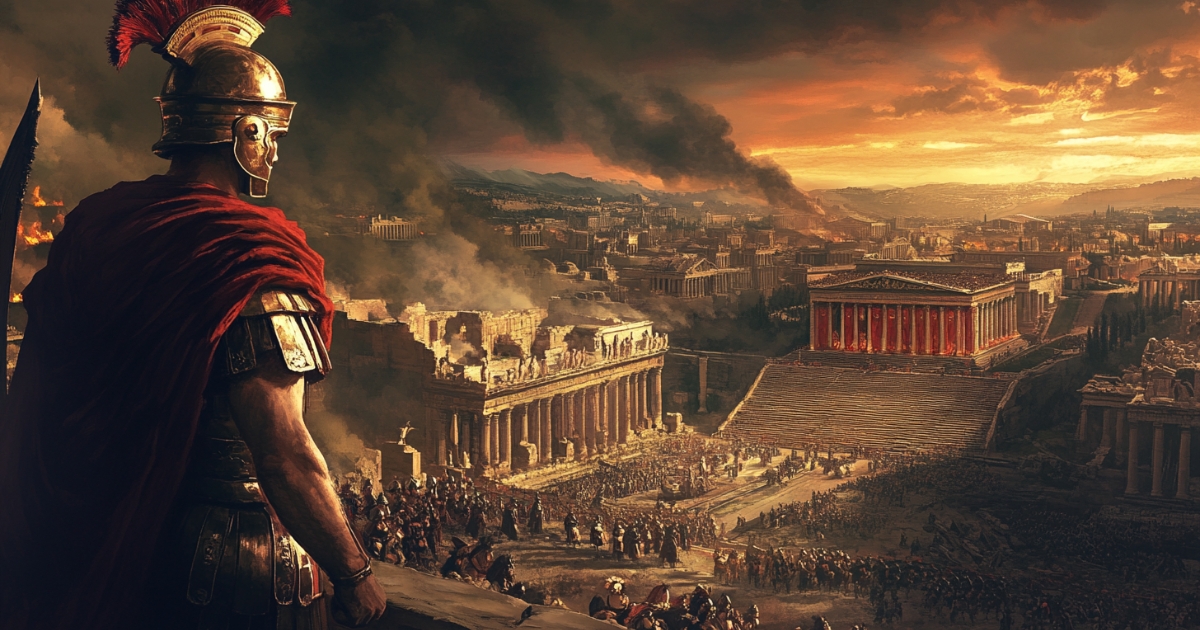Introduction
Emperor Nero, the fifth emperor of the ancient Roman Empire, is known as one of the most controversial rulers in history. His true image is complex and multifaceted. This article analyzes Nero’s reign (54-68 AD) in detail, examining the impact of his rule on the Roman Empire and the changes in his evaluation over time.
Nero’s Ascension and Early Rule
Nero ascended to the throne at the age of 17. Initially, he ruled relatively moderately, guided by his mother Agrippina and the philosopher Seneca. Notably, his early reign saw policies that were popular with the public, such as tax reforms and the promotion of public works. These policies greatly contributed to the stability of his early reign. For example, he abolished indirect taxes and constructed public buildings, striving to improve the lives of the common people.
Conflict with Mother Agrippina
Nero’s relationship with his mother Agrippina was complex. While Agrippina played a significant role in her son’s ascension, she continued to exert strong influence over politics afterward. Nero gradually grew resentful of his mother’s interference and ordered her assassination in 59 AD. This incident has been passed down through history as a symbolic event demonstrating Nero’s cruelty.
The Great Fire of Rome and Subsequent Urban Planning
In 64 AD, a great fire consumed much of Rome. Modern historical scholarship has largely rejected the theory that Nero intentionally caused this fire. While the cause of the fire is unknown, it is thought to be due to the urban structure of Rome at the time (with many wooden buildings) and strong winds that fanned the flames.
After the fire, Nero implemented large-scale urban planning. He built a massive palace called the “Golden House” on the burned land, which became one factor in incurring public resentment. However, he also implemented fire prevention measures in urban design and provided support for victims. These policies were advanced in terms of urban planning.
Persecution of Christians
After the Great Fire of Rome, Nero persecuted Christians. This persecution was partly motivated by using Christians as scapegoats for the fire. However, it is also believed that the view of Christians as disruptors of social order in Roman society at the time played a role.
This persecution is known as the first organized persecution of Christians by the Roman Empire. Many Christians were executed, and it is said that the apostles Peter and Paul were martyred during this period.
Passion for the Arts
Nero had a strong interest in the arts, especially music and theater. He himself engaged in poetry, singing, and acting, sometimes performing in public. He was also enthusiastic about artistic activities, such as participating in music contests in Greece.
The evaluation of Nero’s artistic activities was divided in Roman society of his time. While there were critical voices from some conservative factions, many people are thought to have appreciated his musical and theatrical talents. Nero’s cultural policies are evaluated as having made a certain contribution to Rome’s artistic prosperity.
Nero’s Downfall and Imperial Chaos
In the latter part of Nero’s reign, rebellions occurred across the empire. This is thought to have been influenced by a combination of factors, including public discontent due to urban planning after the Great Fire and the persecution of Christians, as well as loss of support from the military and the Senate.
In 68 AD, when General Galba rebelled, the Senate declared Nero an enemy of the state. Cornered, Nero ultimately committed suicide. After Nero’s death, the Roman Empire plunged into a period of civil war known as the “Year of the Four Emperors.” This chaos can be seen as one of the negative legacies of Nero’s rule on the empire.
Changes in the Evaluation of Nero
After Nero’s death, his evaluation rapidly deteriorated. Especially as Christianity spread, he was demonized as the emperor who persecuted Christians. Throughout the Middle Ages, Nero was treated as synonymous with tyranny.
However, modern historical research has pointed out that there is room for reevaluation of Nero. Aspects that can be positively evaluated, such as his early reign reforms and urban planning after the fire, have come to light. It has also been pointed out that many of the contemporary sources that critically portrayed Nero were written from the perspective of the upper class and may be biased.
Nero’s aspect as an art lover has been evaluated more positively since the modern era. The view that his cultural policies and passion for the arts contributed to Rome’s cultural prosperity has strengthened.
Conclusion
Emperor Nero’s reign is one of the most debated periods in the history of the ancient Roman Empire. While his rule certainly had cruel and despotic aspects, he also had aspects of a reformer and art lover.
Nero’s evaluation has changed over time, but modern historical research is trying to paint a more complex and multifaceted picture of Nero. Through his reign, we can understand various aspects of the politics, society, and culture of the ancient Roman Empire.
Understanding the true image of Emperor Nero provides important perspectives not only for knowing about one emperor but also for considering the complex political structure of the ancient Roman Empire, the relationship between power and art, and the changes in historical interpretation. With the discovery of new historical materials and the advancement of research methods, the evaluation of Emperor Nero may continue to change in the future.


